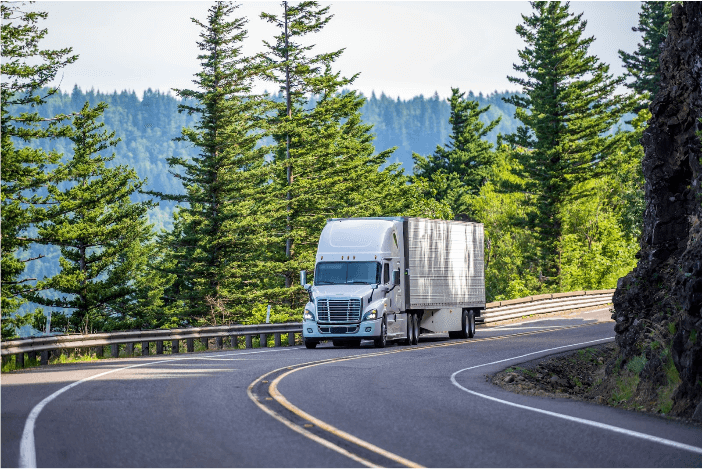Spotlight on FedEx Linehaul Routes: Your Questions Answered
If you are interested in buying FedEx routes and becoming a FedEx Ground contractor, you have two primary options: Pick-up and delivery (P&D) routes or linehaul routes. (You can also own both, as we explain here.) This blog will focus on linehaul routes: what they are, how they differ from P&D routes, and the benefits and drawbacks of owning linehaul routes.
What does a linehaul (or line haul) route actually look like?
With each type of linehaul route, drivers are transporting semi trucks between FedEx Ground hubs all over the country, either individually or in teams.
Linehaul routes consist of three types of runs: dedicated runs, unassigned runs, and spot runs. Dedicated runs operate continuously along the same route, while unassigned runs originate in the same place but the destination will change. Spot runs are something of a hybrid between P&D and linehaul: drivers operate large linehaul trucks to transport freight for large regional customers, such as retailers.
With each type of run, the trips are considerably longer than P&D routes (several hundred to several thousand miles) and require drivers to follow dedicated routes; these can be regional or they may cross state lines. In some cases, the driver will return home at night. However, because linehaul trips can span several days, drivers will often return home when the trip is complete.
Unlike FedEx Ground or FedEx Express, drivers do not interact with the general public. Additionally, they do not need to load and unload the truck. The FedEx linehaul job allows workers to focus on their primary mission of driving the truck/trailer(s) to a specific location. Drivers receive direction from a ground linehaul coordinator who assists them with completing their routes.
What are the pros and cons of owning linehaul routes?
Though more expensive to purchase, linehaul route businesses typically offer larger revenues and cash flows when compared with P&D route businesses—which often makes them more appealing to potential route owners. Contracts pay on a per-mile basis, meaning a single run may generate over four times more revenue than a P&D route.
Still, larger trucks and longer runs come with increased risk. Not only will your insurance costs and driver salaries be larger, but maintenance and repair for your linehaul trucks/trailers will also be more expensive. (Penalties for late deliveries are also higher.)
Finally, if you are considering buying linehaul routes, it is also important to remember that your linehaul drivers are required to have a valid commercial driver’s license (CDL). A criminal background check, DMV check, and drug screening are also part of the linehaul hiring process.
Are FedEx linehaul routes right for you?
If you have the experience and the financial flexibility, buying FedEx linehaul routes may be a great option for you. However, if you are just starting out as a FedEx contractor, you may want to start with P&D routes to get a feel for how everything works. You can always add linehaul routes later after you have established a successful business and are looking to grow.
More questions? Contact KR Capital today.
Buying routes and becoming a FedEx contractor is a significant business decision. If you are still on the fence about which option is right for you, our expert team can further explain the difference between P&D and linehaul routes, as well as help you break down the pros and cons of each. Contact KR Capital today or submit our online Buyer Info Request Form to hear back from us.




